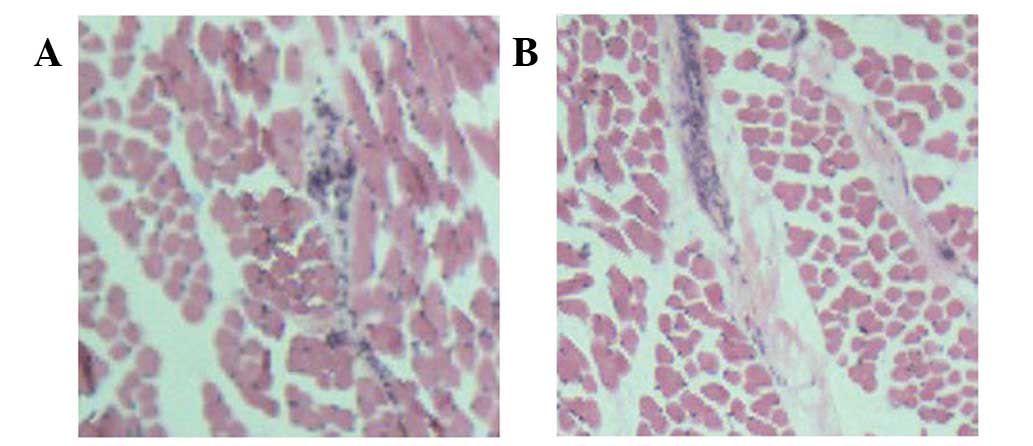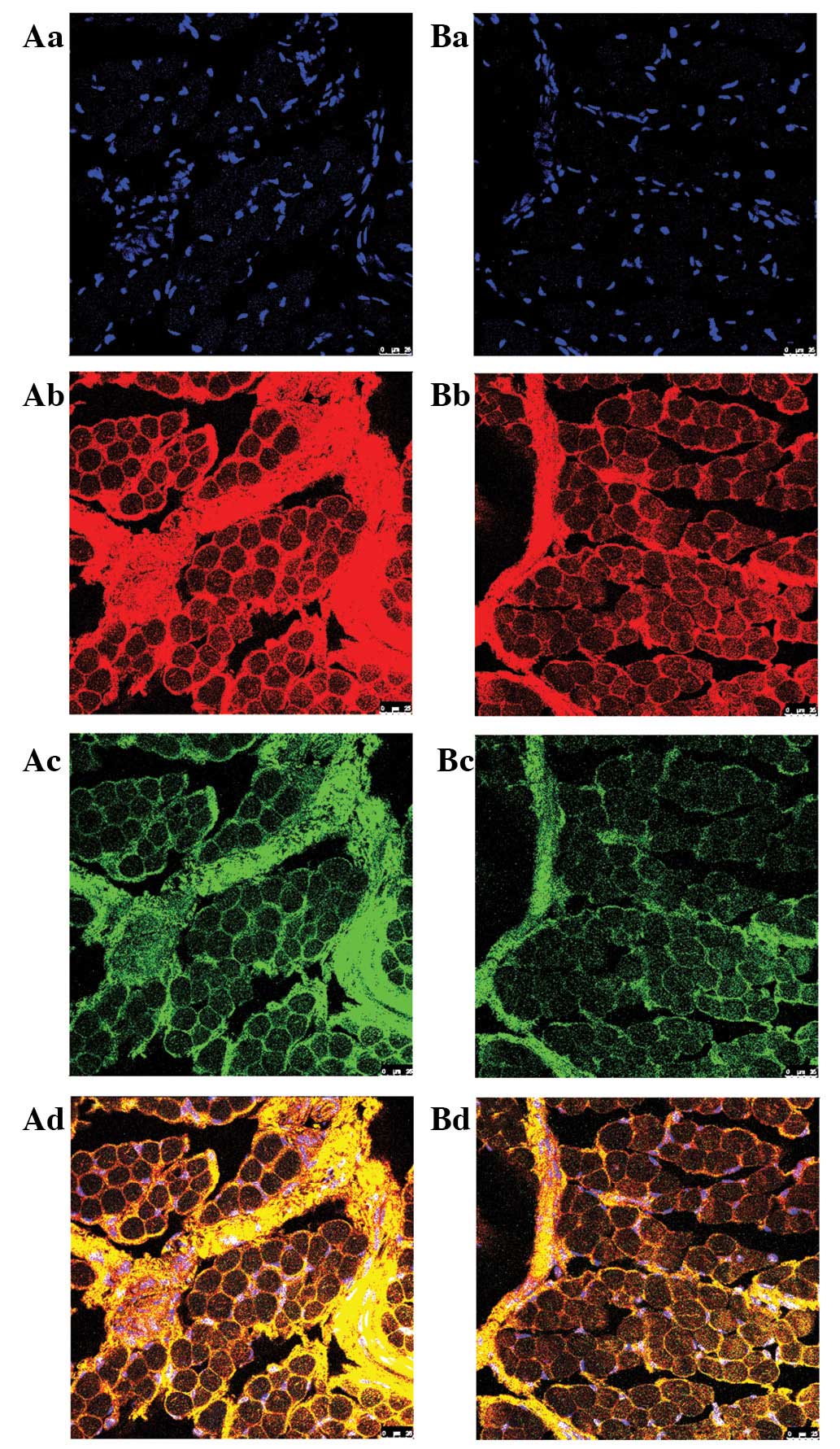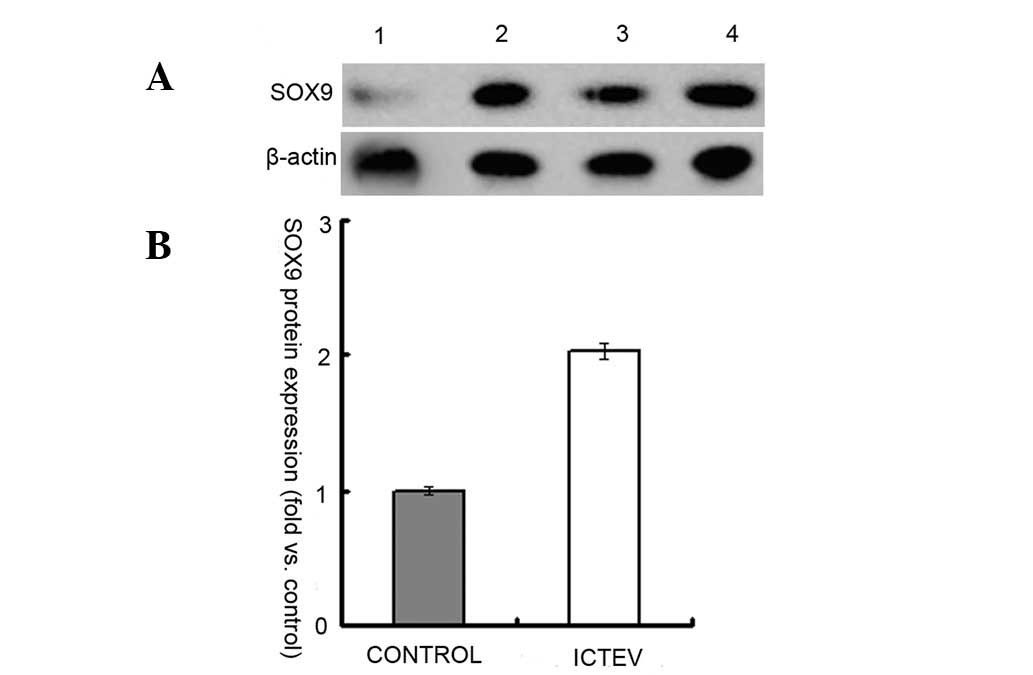|
1
|
Dietz F: The genetics of idiopathic
clubfoot. Clin Orthop Relat Res. 401:39–48. 2002. View Article : Google Scholar : PubMed/NCBI
|
|
2
|
Cardy AH, Barker S, Chesney D, Sharp L,
Maffulli N and Miedzybrodzka Z: Pedigree analysis and
epidemiological features of idiopathic congenital talipes
equinovarus in the United Kingdom: a case-control study. BMC
Musculoskelet Disord. 8:622007. View Article : Google Scholar : PubMed/NCBI
|
|
3
|
Rebbeck TR, Dietz FR, Murray JC and Buetow
KH: A single-gene explanation for the probability of having
idiopathic talipes equinovarus. Am J Hum Genet. 53:1051–1063.
1993.PubMed/NCBI
|
|
4
|
Wynne-Davies R: Genetic and environmental
factors in the etiology of talipes equinovarus. Clin Orthop Relat
Res. 84:9–13. 1972. View Article : Google Scholar : PubMed/NCBI
|
|
5
|
Chapman C, Stott NS, Port RV and Nicol RO:
Genetics of clubfoot in Maori and Pacific people. J Med Genet.
37:680–683. 2000. View Article : Google Scholar : PubMed/NCBI
|
|
6
|
Miedzybrodzka Z: Congenital talipes
equinovarus (clubfoot): a disorder of the foot but not the hand. J
Anat. 202:37–42. 2003. View Article : Google Scholar : PubMed/NCBI
|
|
7
|
Liu LY, Jin CL, Cao DH, Zhao N, Lin CK and
Sun KL: Analysis of association between COL9A1 gene and idiopathic
congenital talipes equinovarus. Yi Chuan. 29:427–432. 2007.(In
Chinese).
|
|
8
|
Wang LL, Fu WN, Li-Ling J, Li ZG, Li LY
and Sun KL: HOXD13 may play a role in idiopathic congenital
clubfoot by regulating the expression of FHL1. Cytogenet Genome
Res. 121:189–195. 2008. View Article : Google Scholar : PubMed/NCBI
|
|
9
|
Cao D, Jin C, Ren M, Lin C, Zhang X and
Zhao N: The expression of Gli3, regulated by HOXD13, may play a
role in idiopathic congenital talipes equinovarus. BMC
Musculoskelet Disord. 10:1422009. View Article : Google Scholar : PubMed/NCBI
|
|
10
|
Zhao Q, Eberspaecher H, Lefebvre V and De
Crombrugghe B: Parallel expression of Sox9 and Col2a1 in cells
undergoing chondrogenesis. Dev Dyn. 209:377–386. 1997. View Article : Google Scholar : PubMed/NCBI
|
|
11
|
Sock E, Pagon RA, Keymolen K, Lissens W,
Wegner M and Scherer G: Loss of DNA-dependent dimerization of the
transcription factor SOX9 as a cause for campomelic dysplasia. Hum
Mol Genet. 12:1439–1447. 2003. View Article : Google Scholar : PubMed/NCBI
|
|
12
|
Bernard P, Tang P, Liu S, Dewing P, Harley
VR and Vilain E: Dimerization of SOX9 is required for
chondrogenesis, but not for sex determination. Hum Mol Genet.
12:1755–1765. 2003. View Article : Google Scholar : PubMed/NCBI
|
|
13
|
Ng LJ, Wheatley S, Muscat GE,
Conway-Campbell J, Bowles J, Wright E, Bell DM, Tam PP, Cheah KS
and Koopman P: SOX9 binds DNA, activates transcription and
coexpresses with type II collagen during chondrogenesis in the
mouse. Dev Biol. 183:108–121. 1997. View Article : Google Scholar : PubMed/NCBI
|
|
14
|
Zhang P, Jimenez SA and Stokes DG:
Regulation of human COL9A1 gene expression. Activation of the
proximal region by SOX9. J Biol Chem. 278:117–123. 2003. View Article : Google Scholar : PubMed/NCBI
|
|
15
|
Rentsendorj O, Nagy A, Sinkó I, Daraba A,
Barta E and Kiss I: Highly conserved proximal promoter element
harbouring paired Sox9-binding sites contributes to the tissue- and
developmental stage-specific activity of the matrilin-1 gene.
Biochem J. 389:705–716. 2005. View Article : Google Scholar
|
|
16
|
Jenkins E, Moss JB, Pace JM and
Bridgewater LC: The new collagen gene COL27A1 contains
SOX9-responsive enhancer elements. Matrix Biol. 24:177–184. 2005.
View Article : Google Scholar : PubMed/NCBI
|
|
17
|
Ross AJ, Tilman C, Yao H, MacLaughlin D
and Capel B: AMH induces mesonephric cell migration in XX gonads.
Mol Cell Endocrinol. 211:1–7. 2003. View Article : Google Scholar : PubMed/NCBI
|
|
18
|
Jakubiczka S, Schröder C, Ullmann R, et
al: Translocation and deletion around SOX9 in a patient with
acampomelic campomelic dysplasia and sex reversal. Sex Dev.
4:143–149. 2010. View Article : Google Scholar : PubMed/NCBI
|
|
19
|
van der Hout AH, van den Ouweland AM, van
der Luijt RB, et al: A DGGE system for comprehensive mutation
screening of BRCA1 and BRCA2: application in a Dutch cancer clinic
setting. Hum Mutat. 27:654–666. 2006.PubMed/NCBI
|
|
20
|
Kalb VF Jr and Bernlohr RW: A new
spectrophotometric assay for protein in cell extracts. Anal
Biochem. 82:362–371. 1977. View Article : Google Scholar : PubMed/NCBI
|
|
21
|
Ippolito E and Ponseti IV: Congenital club
foot in the human fetus. A histological study. J Bone Joint Surg
Am. 62:8–22. 1980.PubMed/NCBI
|
|
22
|
Ippolito E: Update on pathologic anatomy
of clubfoot. J Pediatr Orthop B. 4:17–24. 1995. View Article : Google Scholar : PubMed/NCBI
|
|
23
|
Ionasescu V, Maynard JA, Ponseti IV and
Zellweger H: The role of collagen in the pathogenesis of idiopathic
clubfoot. Biochemical and electron microscopic correlations. Helv
Paediatr Acta. 29:305–314. 1974.PubMed/NCBI
|
|
24
|
Jackson GC, Marcus-Soekarman D,
Stolte-Dijkstra I, Verrips A, Taylor JA and Briggs MD: Type IX
collagen gene mutations can result in multiple epiphyseal dysplasia
that is associated with osteochondritis dissecans and a mild
myopathy. Am J Med GenetA. 152:863–869. 2010. View Article : Google Scholar : PubMed/NCBI
|
|
25
|
Li G, Zheng B, Meszaros LB, Vella JB, Usas
A, Matsumoto T and Huard J: Identification and characterization of
chondrogenic progenitor cells in the fascia of postnatal skeletal
muscle. J Mol Cell Biol. 3:369–377. 2011. View Article : Google Scholar : PubMed/NCBI
|
|
26
|
Gu S, Boyer TG and Naski MC: Basic
helix-loop-helix transcription factor twist1 inhibits the
transactivation function of the master chondrogenic regulator Sox9.
J Biol Chem. 287:21082–21092. 2012. View Article : Google Scholar : PubMed/NCBI
|
|
27
|
Ippolito E, Farsetti P, Caterini R and
Tudisco C: Long-term comparative results in patients with
congenital clubfoot treated with two different protocols. J Bone
Joint Surg Am. 85:1286–1294. 2003.PubMed/NCBI
|
|
28
|
Ponseti IV: Treatment of congenital club
foot. J Bone Joint Surg Am. 74:448–454. 1992.PubMed/NCBI
|














